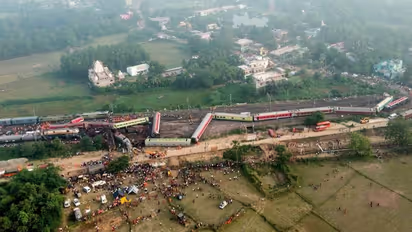How can India prevent train collisions? Here are some options other than 'Kavach'

Synopsis
The Odisha train crash has reiterated the need to have mechanisms in place that ensure Railway safety. Let us take a look at other technologies being used in some countries to prevent train derailments and collisions.
The devastating accident in Odisha's Balasore involving three trains, which claimed nearly 300 lives, has reiterated the need to have mechanisms in place that ensure Railway safety. Home-grown anti-collision technology 'Kavach' was yet to be implemented on the route where the Coromandel Express, Yashwantpur-Howrah Express and the goods train crashed.
There are technologies being used in some countries that can prevent train derailments and collisions. Let us take a look:
Automatic Track Inspection (ATI)
Regular track inspection is essential for identifying potential hazards. The Automatic Track Inspection (ATI) technology, also known as automatic track inspection technology, is highly effective in this regard. ATI technology, such as laser and camera-equipped track geometry cars or track-recording cars, can quickly assess the condition of tracks by identifying faults, anomalies, and discrepancies. These cars examine various parameters of track geometry without disrupting normal rail operations, enabling timely maintenance and reducing the risk of track failures.
Advanced Signaling System
The advanced signaling system plays a crucial role in modern trains. Many countries employ advanced signaling systems, such as Positive Train Control (PTC), in their train networks. PTC technology utilizes GPS, wireless communication, and onboard computer integration to monitor and control train activities. The PTC system incorporates communication-based and processor-based train control technologies to actively prevent train-to-train collisions, overspeed derailments, and issues with switch positions. If necessary, this technology can automatically apply brakes to prevent potential collisions.
Train Collision Avoidance System (TCAS)
The Train Collision Avoidance System (TCAS) utilizes radar, lidar, and other sensor technologies to detect obstacles, including other trains, vehicles, or pedestrians on the tracks. These systems provide real-time alerts to train operators, enabling them to take immediate action to avoid collisions.
Identification and Mitigation of Potential Risks
Several technologies can identify potential risks. By analyzing data from sensors such as temperature, vibration, and monitoring systems, maintenance teams can detect early warning signs and take proactive measures to prevent accidents.
Advanced Communication Systems
Effective communication and dialogue between train operators, control centres, and maintenance personnel are crucial for accident prevention. Modern communication systems equipped with wireless data networks and real-time reporting tools facilitate the rapid transmission of information. In emergency situations, coordinated and immediate responses between teams can help avert disasters.
Leading Countries in Preventing Rail Accidents
Japan: Renowned for its skilled and secure train system, Japan has implemented various advanced technologies to prevent accidents. Its Shinkansen bullet train is equipped with state-of-the-art signalling systems and automated train control, boasting a flawless safety record. Japan also places great emphasis on regular inspection and maintenance by adopting advanced track inspection and maintenance technologies.
Germany: Germany is recognized for its stringent safety standards and continuous investment in the latest technology. The country has implemented comprehensive train control systems, including the European Train Control System (ETCS), ensuring safe train operations across various rail networks. Germany also prioritizes employee training and conducts regular safety audits.
South Korea: South Korea has made significant progress in preventing train accidents through the implementation of important measures such as automatic train stop systems, train integrity monitoring, and advanced signalling systems. The country emphasizes the use of high-tech equipment and regular maintenance to ensure the safety of its train operations.
Stay updated with the Breaking News Today and Latest News from across India and around the world. Get real-time updates, in-depth analysis, and comprehensive coverage of India News, World News, Indian Defence News, Kerala News, and Karnataka News. From politics to current affairs, follow every major story as it unfolds. Get real-time updates from IMD on major cities weather forecasts, including Rain alerts, Cyclone warnings, and temperature trends. Download the Asianet News Official App from the Android Play Store and iPhone App Store for accurate and timely news updates anytime, anywhere.